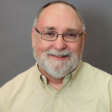Hubbard Radio Washington DC, LLC. All rights reserved. This website is not intended for users located within the European Economic Area.
Goddard CATS project poised for January launch
Scientists are waiting for the Jan. 6 SpaceX 5 mission to carry a new scientific instrument to measure the composition of the atmosphere to the International Sp...
When the SpaceX 5 mission launches from the Kennedy Space Center on Jan. 6, it will be carrying the first piece of Earth-science technology developed at Goddard Space Flight Center to be deployed to the International Space Station.
The Clouds and Aerosol Transport System, or CATS, technology will measure and characterize the distribution of clouds and tiny particles, called aerosols, throughout the atmosphere worldwide.
“It’s a spectacular opportunity that literally fell in our lap from the space station program, because they needed to jumpstart science utilization on the station,” said Matthew McGill, principal investigator CATS. “The station is built. The station cost us a bajillion dollars to build this thing, now we need to use it.”

The ISS program came to McGill and his team to see if they could develop monitoring technology similar to the autonomous instruments they were already building for NASA’s ER-2 High-Altitude Airborne Science Aircraft and adapt it to space use.
“From us, it was a science perspective of we could do something useful using what we know we can build,” McGill said. “From the ISS perspective, it was, ‘We think you can build something quickly and efficiently that fits the box.'”
The CATS instrument is about the size of a refrigerator with a 60 centimeter telescope in the center.
“It weighs 500 kilograms, which is the limit that you’re allowed for up there,” McGill said. “So we didn’t have to spend a lot of money trying to save every ounce and gram of weight. Straight, simple, forward engineering gets us to the endgame on this one.”
Once installed, the instrument will send discrete pulses of light into the atmosphere to profile and measure the composition of clouds and particles.
“The speed of light’s known, so we can time the difference between when we send the light, when we see the signal, we know exactly what height in the atmosphere the signal’s coming from,” McGill said. “It’s only a tiny fraction of light that’s scattered straight back to the collecting telescope. That’s why we need sensitive detectors.”
McGill explained that CATS is similar to radar. It uses a low-pulse energy laser in the visible/near visible wavelength range. A small fraction of the wavelengths of light return to the CATS.
“From that, we can range where things are at in the atmosphere,” McGill said. “Using the multiple wavelengths, we can tell what are the things. Are they water clouds or ice clouds? That matters a lot to the scientific community. When we see pollutants, are they made of dust, smoke, general smog pollution? That matters a lot. If there are volcanic plumes, what height are those? You want to keep airplanes out those. You want to track for air quality.”
CATS will be used to track natural hazards, such as plumes of airborne debris from volcanic eruptions; climate change; and the effects of man-made and natural pollutants on air quality.
“The volcanic eruption in Iceland was a huge disruption, a lot of concern about flying airplanes into it, and although NASA’s job isn’t to predict things for airlines, hazard avoidance is part of our job,” McGill said. “And that will happen again at some point.”
He added that clouds are the largest uncertainties when it comes to predicting climate change.
“Our goal to take data from CATS, get it into forecast models, in particular aerosol forecast models, because those models need this vertical distribution,” McGill said. “They need to know where there are pollutants and what height in the atmosphere they’re at. What are they comprised of? Are they smoke or are they dust?”
One of the advantages of putting CATS on ISS is that the information it collects will be sent back to the Earth on a continuous basis, so that the it will be able to inform the weather prediction models with the latest data.
“CATS is all about tech-demo, for demonstrating certain technologies in space that can impact our bigger flagship missions later on,” McGill said. “So, that is one tech aspect of ISS. It’s a low-cost platform to demonstrate the technologies in the relevant environment that we can pick up later using our big missions.”
CATS is just one of the many projects under development at Goddard.
“If you’re just looking at our internal research and development program, we’ve got over 170 projects going on,” said Christyl Johnson, Goddard deputy director for technology and research investments. “But a much larger scope of ones in operations, some that are in development and some that in formulation. So, it’s hundreds of projects going on right now.”
Johnson told reporters during a November press tour of Goddard that the facility serves an important niche for the science community and technologists.
“We’re looking at things like green propulsion even, totally eliminating the hazards associated with human beings dealing with some of these propellants,” she said. “Being able to reduce the size of some of our [fuel] tanks, increase the lifetime on orbit, shrinking things down to real small sizes and doing things like CubeSats [miniaturized satellites] where you can have multiple spacecraft flying all at the same time and maybe coming together to do what only one spacecraft could do before. So, we’re talking about Transformer kind of things, realizing space missions for the future. That’s what gets me really excited.”
On the technology side she said, it makes more sense to fly multiple, smaller, low-cost missions to gather preliminary data to help spur on future science missions.
“It’s important for us to take advantage of some of the currently operating platforms, like the International Space Station,” Johnson said. “And so, when we do those types of things, we can fly some of those smaller missions, we can learn some phenomena, we can build some future missions around what we learn from those. And on the technology side of the house, we kind of use them as a technology demonstration platform. That helps us to raise the technology level to a place where it’s actually ready for us to just infuse it into future missions.”
Goddard’s role then is to provide its science and technology communities with a quicker access to space that costs less money.
“This CATS instrument is a real demonstration of the efficacy of this strategy,” Johnson said. “Not only is it going to show a new capability for observations, but it’s going to show some very important science data that’s going to be important to the Earth-science community and to global climate research.”
Piers Sellers, deputy director for science division and acting director of the earth science division at Goddard, visited ISS three times as a shuttle program astronaut.
“It’s a perfect platform for doing an awful lot of observations of Earth systems,” he said, of ISS. “The spacecraft is already there — the power, the cooling, all the stuff you need, data transmission — it’s already there. All you’ve got to do is build the instrument, bolt it on so it doesn’t fall off and you’re go to go. So, it lends itself very much towards the rapid development of instruments, deployment, tests, tech development and stuff like that.”
RELATED STORIES:
NASA brings new attitude to stimulate IT innovation
Copyright © 2024 Federal News Network. All rights reserved. This website is not intended for users located within the European Economic Area.
Michael O'Connell
Michael O’Connell is senior digital editor of Federal News Network optimizing content for the best user experience. Follow @moconnellWFED
Follow @moconnellWFED
Protected: CX Exchange 2024: HCLSoftware’s Michael Roe on keeping people at center of experience design
Related Topics





